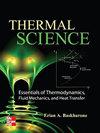Investigation of thermal and dimensional behavior of 3-D printed materials using thermal imaging and 3-D scanning
IF 1.1
4区 工程技术
Q4 THERMODYNAMICS
引用次数: 0
Abstract
Fused deposition modeling is one of the most widely used 3-D printing technologies, among other additive manufacturing processes, because it is easy to use, can produce parts faster, and the cost of the finished part is low. Printing processes and finished parts are often studied and characterized using different techniques to collect mechanical, numerical, thermal and dimensional data, with the aim of improving and optimizing the result. The first part of this research is based on the observation of temperature changes with a thermal imaging camera during the fused deposition modeling printing process and during the cooling process after printing. Specimens of polylactic acid and polylactic acid-X improved with second-phase particles were prepared to compare the thermal and dimensional properties of the two materials. The obtained results determined the characteristic temperature behavior of the materials. In the second part of the research, a 3-D optical scanner was used to verify the stability and accuracy of the printed specimens over time. The proposed measurement period showed that stabilization of the parameters takes place, and further follow-up should be performed thereafter.利用热成像和三维扫描技术研究三维打印材料的热行为和尺寸行为
在其他增材制造工艺中,熔融沉积建模是应用最广泛的3d打印技术之一,因为它易于使用,可以更快地生产零件,并且成品零件的成本很低。通常使用不同的技术来研究和表征印刷过程和成品部件,以收集机械,数值,热和尺寸数据,目的是改进和优化结果。本研究的第一部分是基于热像仪对熔融沉积造型打印过程和打印后冷却过程中温度变化的观察。制备了聚乳酸和二相颗粒改性聚乳酸- x的试样,比较了两种材料的热性能和尺寸性能。所得结果决定了材料的特征温度行为。在研究的第二部分,使用3d光学扫描仪来验证打印标本随时间的稳定性和准确性。建议的测量周期表明参数稳定发生,此后应进行进一步的随访。
本文章由计算机程序翻译,如有差异,请以英文原文为准。
求助全文
约1分钟内获得全文
求助全文
来源期刊

Thermal Science
工程技术-热力学
CiteScore
2.70
自引率
29.40%
发文量
399
审稿时长
5 months
期刊介绍:
The main aims of Thermal Science
to publish papers giving results of the fundamental and applied research in different, but closely connected fields:
fluid mechanics (mainly turbulent flows), heat transfer, mass transfer, combustion and chemical processes
in single, and specifically in multi-phase and multi-component flows
in high-temperature chemically reacting flows
processes present in thermal engineering, energy generating or consuming equipment, process and chemical engineering equipment and devices, ecological engineering,
The important characteristic of the journal is the orientation to the fundamental results of the investigations of different physical and chemical processes, always jointly present in real conditions, and their mutual influence. To publish papers written by experts from different fields: mechanical engineering, chemical engineering, fluid dynamics, thermodynamics and related fields. To inform international scientific community about the recent, and most prominent fundamental results achieved in the South-East European region, and particularly in Serbia, and - vice versa - to inform the scientific community from South-East European Region about recent fundamental and applied scientific achievements in developed countries, serving as a basis for technology development. To achieve international standards of the published papers, by the engagement of experts from different countries in the International Advisory board.
 求助内容:
求助内容: 应助结果提醒方式:
应助结果提醒方式:


